
Provence Hackberry: planting, cultivation, maintenance
Contents
The Hackberry in a nutshell
- The hackberry is a large tree with an elegant, spreading, rounded habit
- It is valued for its dark green deciduous foliage and edible fruits
- Highly adaptable, drought-resistant, and tolerant of pollution, it even grows in poor, dry, or calcareous soils
- Hardy, it adapts well to many regions
- It is an excellent shade or street tree
A word from our expert
The Celtis australis, commonly known as the Mediterranean Hackberry, is an iconic tree of the Mediterranean South, notable for its rounded silhouette, beautiful dark green deciduous foliage, and fleshy edible fruits that are favoured by birds. Majestic, it is also valued for its longevity, rapid growth, and adaptability to various types of soils and climates. Its dense foliage provides pleasant shade in summer and displays lovely autumn colours. It is not demanding regarding soil, as long as it is sufficiently deep.
Superb when planted alone, resistant to both drought and pollution, this tree is no longer confined to southern regions; it will adapt to any type of soil, and its good hardiness allows it to be acclimatised throughout France, provided it is given a sunny location sheltered from cold winds. Its significant development, reaching 25 m in height and 15 m in spread, makes it suitable for parks and large gardens. With its rounded crown, the Mediterranean Hackberry is often used as a specimen tree or for alignment.
Discover this vigorous and easy-to-cultivate tree, which, once established in the garden, requires very little maintenance!
Description and Botany
Botanical data
- Latin name Celtis australis
- Family Cannabaceae
- Common name Mediterranean Hackberry, Southern Hackberry, Australian Hackberry, Falabreguier
- Flowering March to April
- Height 15 to 20 m
- Exposure Sun
- Soil type All, preferably cool and well-drained
- Hardiness Down to -20 °C
The Celtis, commonly known as Hackberry, is a majestic tree belonging to the Cannabaceae family, like hemp (Cannabis sativa) and hops (Humulus lupulus). The genus comprises 60 to 70 species of deciduous trees found in the warm temperate regions of the northern hemisphere. Among them, the most widespread are the European Hackberry or Mediterranean Hackberry (Celtis australis), the Northern Hackberry (Celtis occidentalis), the Chinese Hackberry (Celtis sinensis), and the Mississippi Hackberry (Celtis laevigata). In southern France and Corsica, one can find Celtis australis, hence its other names “Mediterranean Hackberry” or “Southern Hackberry”, which is native to Southern Europe and Western Asia. It is widely distributed in Mediterranean regions, often growing in hedges and on slopes up to 900 metres in altitude, where it enjoys a favourable environment for its flourishing.
This light-loving species from southern regions requires good sunlight to thrive. In France, it is mainly found in plains and low mountain areas, where it can benefit from optimal climatic and geological conditions. It is distinguished by its great longevity: the Mediterranean Hackberry can live up to 500 years.
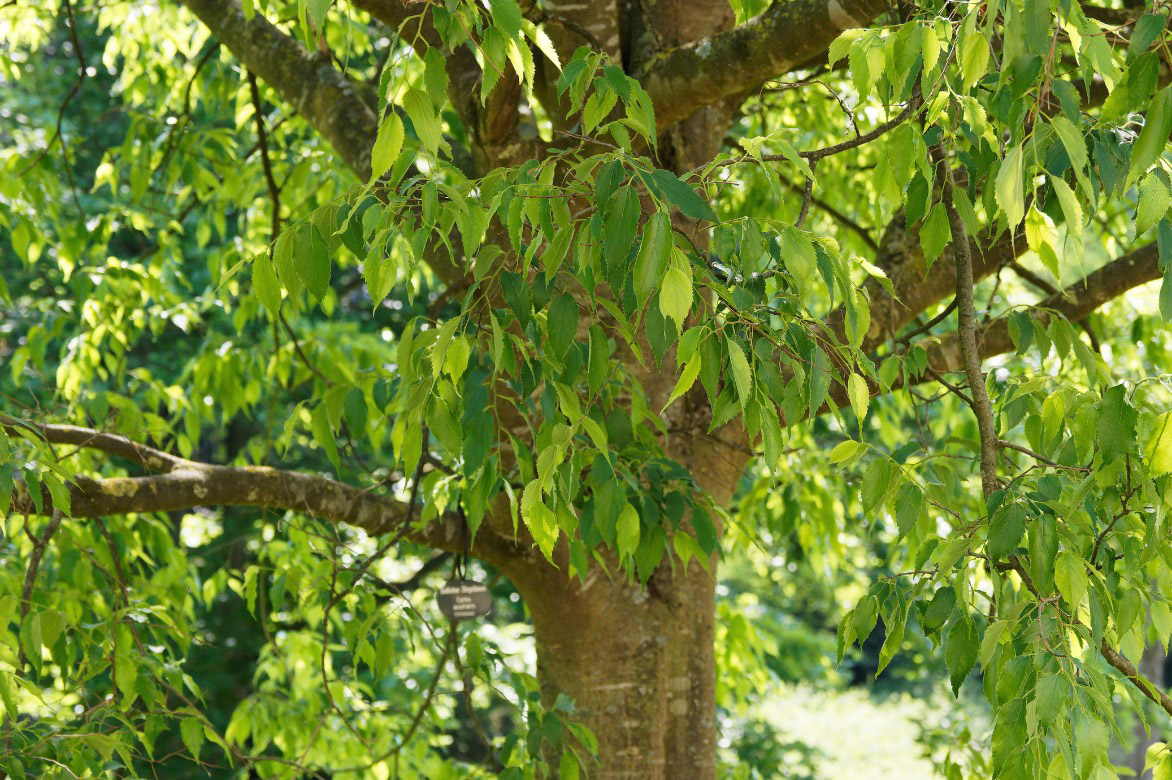
In southern regions, the Mediterranean Hackberry, encouraged by abundant sunlight and mild temperatures throughout the year, is a fast-growing tree. It can reach a height of 25 metres and a spread of 15 metres, making it an imposing tree. In cooler areas, where warmth is lacking, it exhibits slower and more moderate growth but will still form a robust and resilient tree capable of adapting.
This tree, with a short bole and a dense, spreading, rounded habit, features beautiful dark green deciduous foliage. The leaves are alternate, ovate, and finely dentate, measuring between 10 and 15 cm in length. They are rough to the touch and display a glossy dark green colour on the upper side, while their underside is greyish. They resemble those of nettles, hence its other nickname “tree with nettle-like leaves”. In autumn, the leaves turn a pale yellow before falling. The bark is greyish and smooth, marked with fine longitudinal cracks.
The flowering is discreet, consisting of greenish flowers that appear at the bud burst period. These flowers give way, in June, to small fleshy, round fruits. These hackberries are green, turning reddish-black at maturity in early autumn. The drupes of the Mediterranean Hackberry are edible and have a sweet flavour. They persist throughout winter on the branches and are also highly appreciated by birds, who relish these sweet and juicy fruits.
In the past, the fruits of the Mediterranean Hackberry, although small and not very fleshy, were valued for their sweet flavour and used to flavour liqueurs or consumed raw. Its soft and durable wood was used to make tool handles, furniture, and other wooden items. Today, the Mediterranean Hackberry is primarily planted as a shade or street tree, particularly in cities where it provides dense and refreshing shade. Highly tolerant of pollution, it thrives in urban heat islands where air quality may be poor.
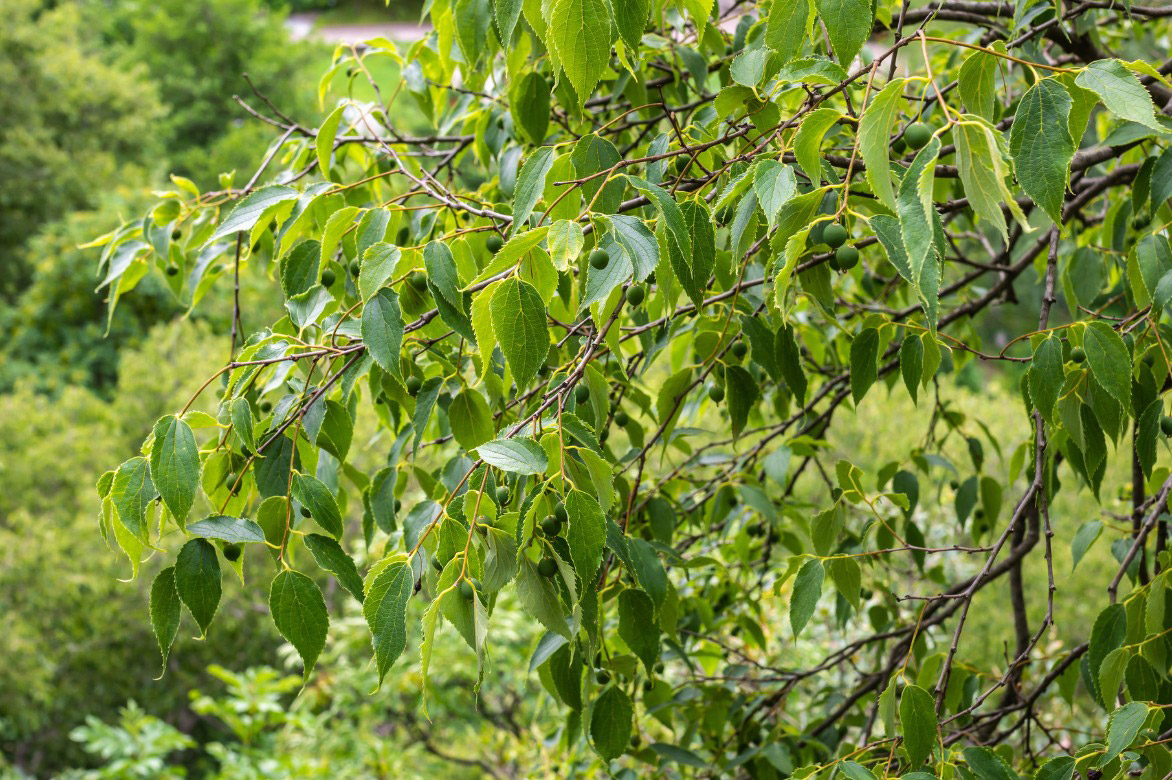
Read also
10 shade treesMain species
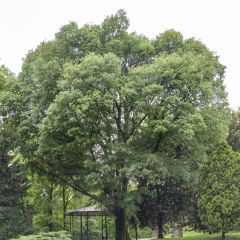
Celtis australis
- Mois de floraison April, May
- Hauteur à maturité 20 m
Planting the Hackberry Tree
Where to Plant It?
The Mediterranean Hackberry is an easy tree to grow. Although native to Mediterranean regions, it has demonstrated a great capacity for adaptation to the various climates and soils of France. Indeed, it has begun its migration into northern regions, where it can withstand winter temperatures as low as -20 °C. This is a very resilient tree, capable of adapting to a variety of growing conditions. It requires a sunny location, sheltered from cold winds. While it can tolerate the cold, it fears prolonged frost periods. Remember, this is a sun-loving tree that primarily needs warm summers. Therefore, it is recommended to plant it in a sunny spot, protected from cold winds, especially in regions north of the Loire.
It thrives in deep, cool, and well-drained soil. It can tolerate poor or calcareous soils, making it easy to grow in many types of soil. The Mediterranean Hackberry requires sufficiently deep soil to allow its roots to develop properly and withstand long periods of summer drought.
Stunning when planted alone, it is ideal for being placed in the middle of a park or large garden. It is also commonly used as a street tree to line large pathways, providing generous shade and an attractive aesthetic.
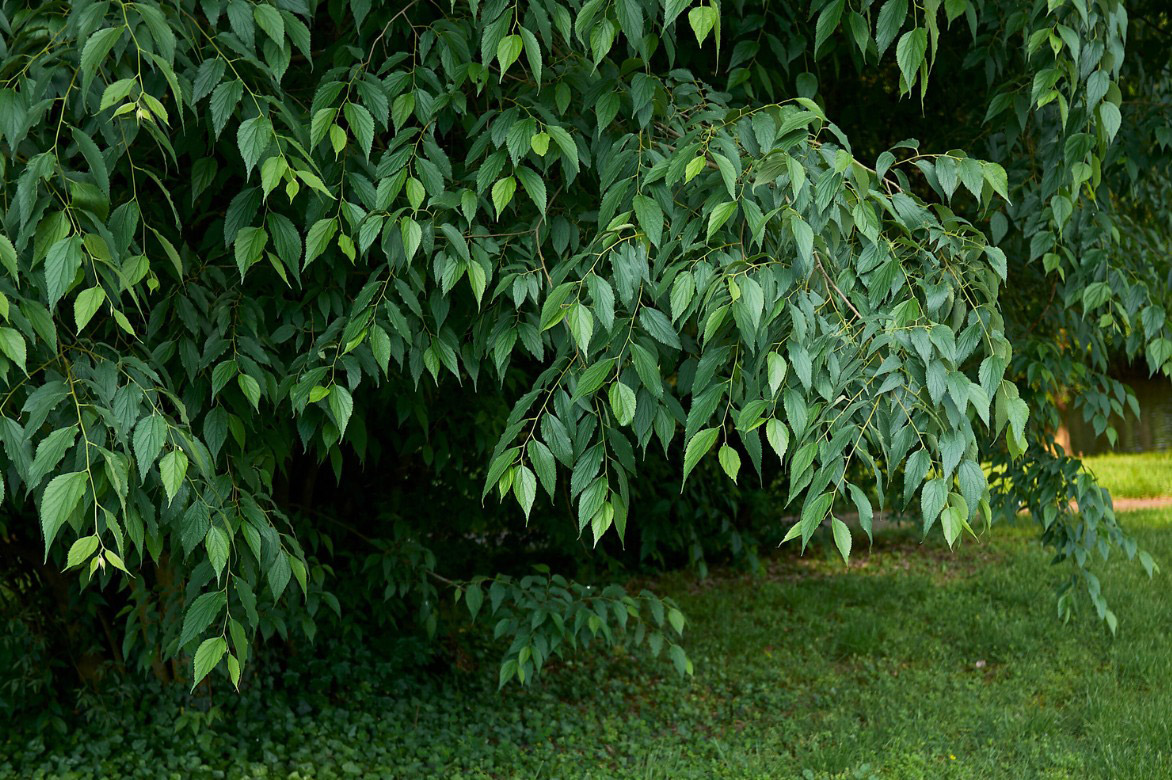
When to Plant a Mediterranean Hackberry?
Plant it in spring, when all risk of frost has passed, or in autumn, from September to November, to ensure deep rooting before winter.
How to Plant It?
- Choose a sunny location, sheltered from cold winds, with deep, cool, and well-drained soil.
- Dig a planting hole two to three times larger than the root ball of the tree
- Place a drainage layer at the bottom of the hole (gravel, clay balls) if your soil is heavy and poorly drained.
- Position the root ball in the hole, ensuring that the collar (the base of the trunk) is level with the soil.
- Install a stake
- Backfill with the excavated garden soil mixed with compost
- Water generously, then regularly to encourage recovery
- Mulch the soil around the trunk to retain moisture and limit weed growth.
Read also
10 good reasons to plant a treeMaintenance, pruning and care
The Celtis australis requires little maintenance. It is recommended to keep the soil moist during the first two summers following planting to encourage healthy growth. Afterwards, it will rely on rainwater and will not require additional watering. Using mulch can also help maintain good soil moisture. Once established, this tree is relatively drought-resistant.
Pruning the Hackberry is not necessarily required. However, formative pruning can be carried out on young specimens to shape the framework and clear the trunk. Subsequently, a pruning every three years, to be done between October and December, is recommended to maintain its harmonious shape and remove dead or damaged branches. This tree tolerates pruning well. Remove the numerous suckers that appear at the base of the trunk.
The Provence Hackberry is not very susceptible to diseases and pests.
Multiplication
The Hackberry tree multiplies by sowing, a simple method to obtain new young plants.
If you have a specimen in your garden, collect the seeds in autumn. The seeds are sown after cold stratification.
- Sow the seeds in autumn or spring under a frame or in a nursery and cover them with about 1 cm of compost
- Keep moist until germination, which can take over a year
- Transplant into the ground in spring when the seedlings are at least 50 cm tall
Garden Associations
The Hackberry is a majestic tree that, if allowed to grow freely, has a beautiful stature. It is therefore best reserved for parks and very large gardens where it can be planted as a specimen or in alignment to frame a grand avenue. The ultimate shade tree, it is ideal for creating an area to relax or dine sheltered from the sun’s rays. You can provide it with a backdrop of evergreen bushes or conifers such as cypress, yew, or junipers, and pair it with Mediterranean perennials, shrubs, and southern trees (Lychnis, Salvia, Cistus, Ceanothus, Teucrium, Phlomis, and Arbutus unedo).
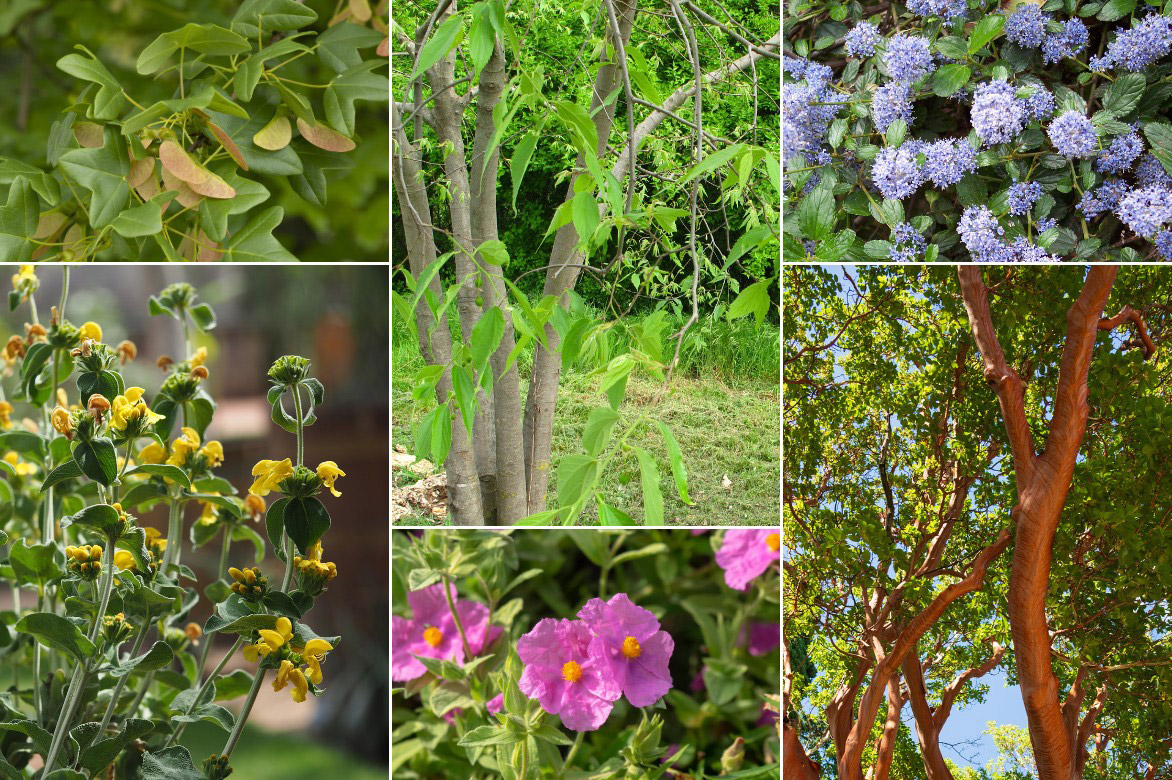
Acer monspessulanum, Celtis australis (photo: Claudio Gioseffi), Ceanothus thyrsiflorus ‘Repens’ (photo: A. Barra), Phlomis fruticosa, Cistus albidus, and Arbutus andrachne
In the shade of this grand tree, place a Photinia serratifolia with ornamental evergreen foliage all year round. Not far from it, in a large park, other characterful trees can join without competing: holm oak, sycamore maple, Montpellier maple.
Useful resources
- Discover our selection of shade trees for large gardens.
- Some remarkable trees to install in a park.
- Subscribe!
- Contents
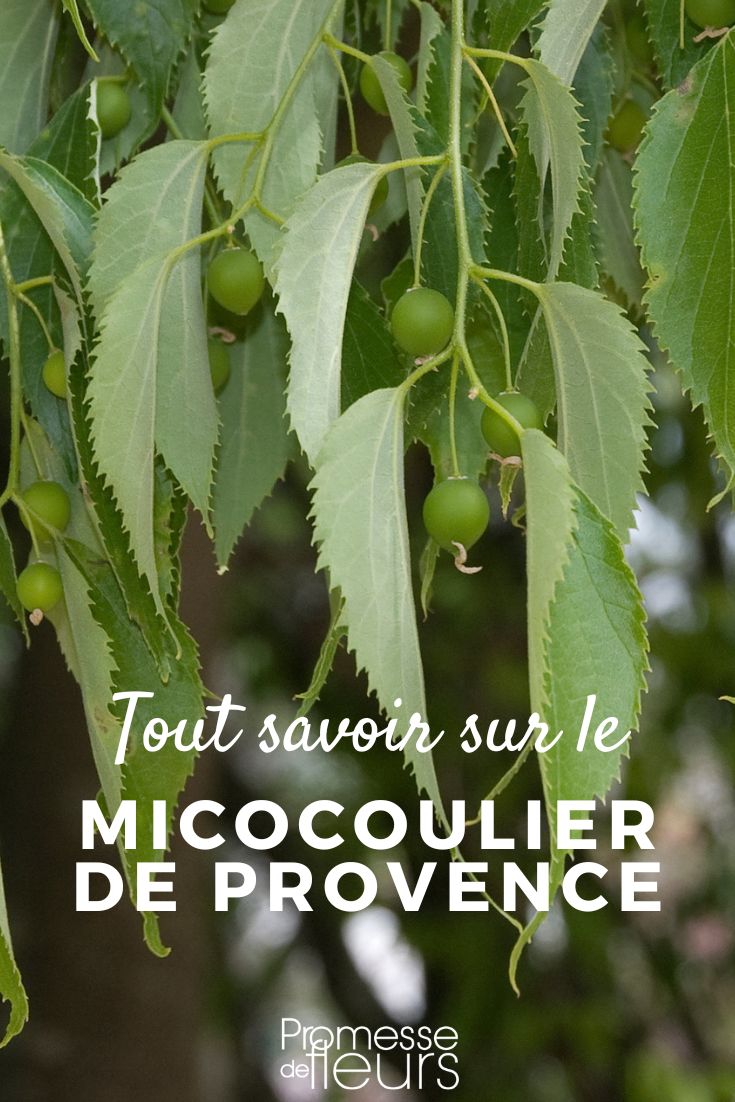































Comments